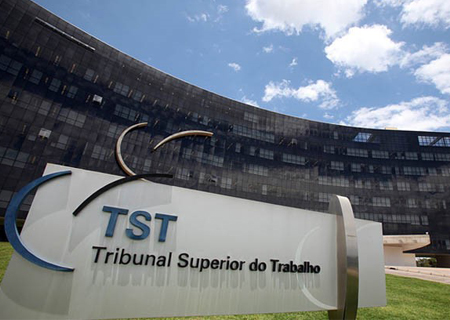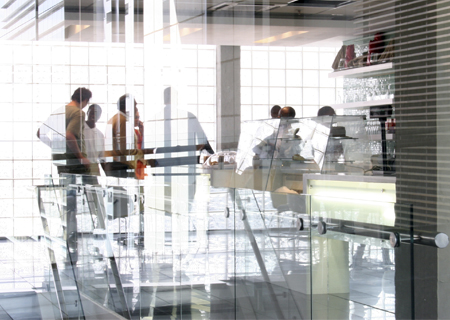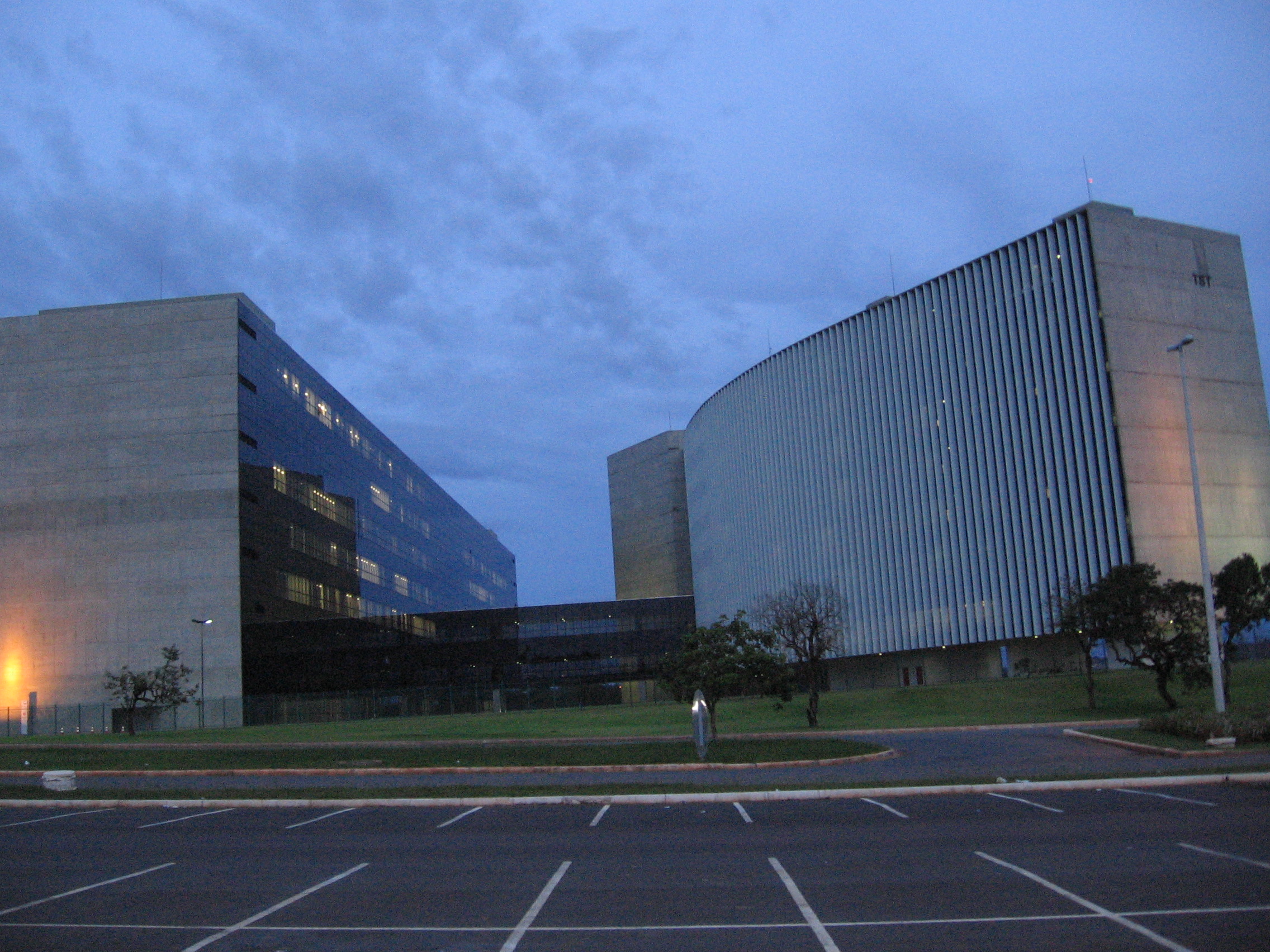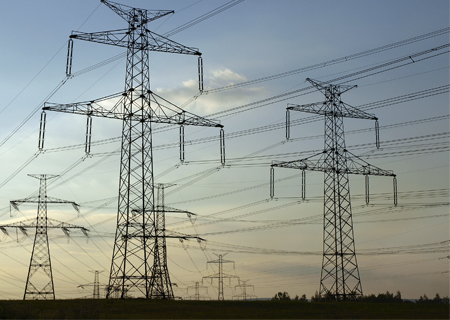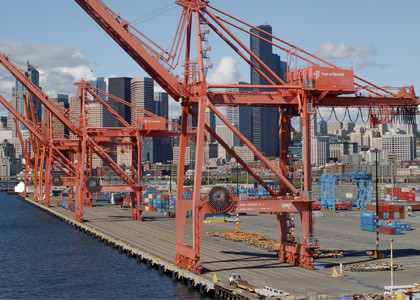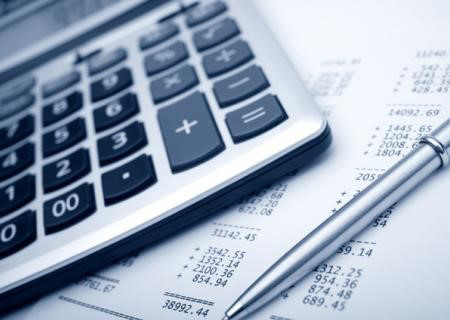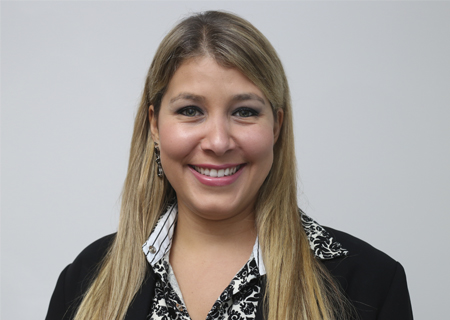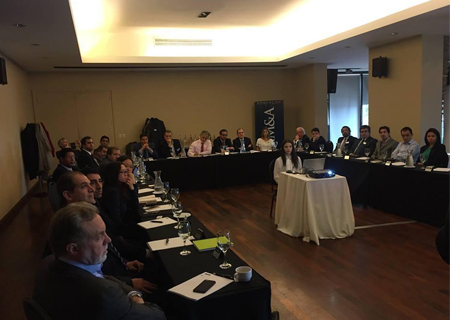
Chapter Content
- 1 . Liability Systems
- 2. Causation
- 3. Defences and Estoppel
- 4. Procedure
- 5. Time Limits
- 6. Remedies
- 7. Costs / Funding
- 8. Updates
1 . Liability Systems
1.1 What systems of product liability are available (i.e. liability in respect of damage to persons or property resulting from the supply of products found to be defective or faulty)? Is liability fault based, or strict, or both? Does contractual liability play any role? Can liability be imposed for breach of statutory obligations e.g. consumer fraud statutes?
The Brazilian Consumer Protection Code (Law No. 8,078/1990 – “CPC”) provides for two systems of product or service liability: (i) liability for the product or service itself; and (ii) liability for a flaw in the product or service.
In what concerns the liability for the product or service itself, the supplier – which means any individual or legal entity described in question 1.3 below – must repair damages caused to consumers by defects resulting from design, manufacture, construction, assembly, formulas, handling, presentation, or packaging, as well as insufficient or inaccurate information about their use and risks.
As for the liability related to a flaw in the product or service, the supplier is liable for defects in the quality or quantity that make the products unsuitable or inadequate for consumption, or that reduces its value or quantity. Differently from what happens in relation to the liability for the product or service itself, the flaw is related to the inadequacy of the product or service, involving a mismatch between the product or service and the consumer’s legitimate expectations about them.
Under the CPC, with the exception of the liability of self-
employed individuals, civil liability is always strict, meaning that the consumer will not need to prove the supplier’s fault, but only the connection (causal nexus) between the damage and the action or omission of the supplier. For this reason, it is irrelevant whether the liability arises from a contractual or extra-contractual relationship.
Both abovementioned liabilities can be imposed against the supplier for breach of a statutory obligation resulting in a defect in the product/service, described by the CPC as a harmful or hazardous product/service to consumers’ health or safety, which is analysed on a case-by-case basis.
1.2 Does the state operate any special liability regimes or compensation schemes for particular products e.g. medicinal products or vaccines?
The state does not operate special liability regimes or compensation schemes for products/services beyond those provided in the CPC.
1.3 Who bears responsibility for the fault/defect? The manufacturer, the importer, the distributor, the “retail” supplier or all of these?
The CPC does not restrict liability for faults/defects to a single entity. The manufacturer, producer, assembler, builder, creator, constructor, importer, exporter, distributor or marketer, whether national or foreign, can be severally and jointly liable for damages caused to the consumer, as liability embraces all the members of the supply chain.
Retail suppliers are not part of the general rule when it comes to a liability for the product itself, as they will only be held responsible in the following situations: (i) when other parties of the supply chain cannot be identified; (ii) when the product/service does not have clear identification of its producer, provider, builder, importer; or (iii) when the retail supplier does not adequately store perishable products.
However, when it comes to a liability for a flaw in the product/service, retail suppliers do not receive such privileged treatment, given that they can be jointly liable along with the other entities pertaining to the relevant supply chain.
1.4 May a regulatory authority be found liable in respect of a defective/faulty product? If so, in what circumstances?
In certain specific circumstances, a regulatory authority may be held liable for damages resulting from a defective or faulty product/service, notably if such authority: (i) is aware that a product/service is unsafe and fails to take sufficient precautions to protect the public and prevent damages; (ii) has issued an approval or certification to a product/service that later proved to be defective or faulty; (iii) has issued guidance or directives for the use or manufacture of a product or performance of a service, and such recommendations are subsequently found to be inadequate; and (iv) has failed to establish adequate safety standards for a product/service or has failed to enforce compliance with those standards by the manufacturer/provider.
Despite the above, the regulatory authority’s liability must be assessed on a case-by-case basis.
1.5 In what circumstances is there an obligation to recall products, and in what way may a claim for failure to recall be brought?
The obligation to recall products arises when the supplier of products and/or services, after their introduction into the consumer market, becomes aware of their hazardous nature or potential risk to cause harm to the consumer’s health or safety. Should this be the case, the supplier must immediately warn the competent authorities and consumers through advertising announcements disseminated in the press, radio, and television, at the supplier’s own expense.
In the event that the supplier is aware, or should be aware, that a certain product/service presents a high risk of harmfulness to consumer’s health or safety, such product/service must not be placed on the market.
Although Ordinance No. 618/2019, issued by the Ministry of Justice, regulates the recall procedure for all types of products, some specific products have their own regulation in this regard, such as: (i) medicine, by means of ANVISA’s Board Resolution No. 625/2022; and (ii) vehicles, by means of Ordinance No. 3/2019, issued by the Ministry of Justice and Public Safety.
With regard to bringing a claim for failure to recall, consumers who have been harmed/damaged by a recalled product may be able to pursue a claim for failure to recall by filing a product liability lawsuit against the manufacturer or supplier.
1.6 Do criminal sanctions apply to the supply of defective products?
Notwithstanding the fact that the civil liability does not depend on criminal liability, some types of conduct are typified as crime against the consumers, without prejudice to the provisions of the Criminal Code and specific law. The most important conducts are: (i) failure to warn about the harmful effects of a product/service; (ii) failure to inform the competent authorities and consumers of the harmful effects of a product which became known only subsequent to its placement on the market; (iii) failure to immediately withdraw the harmful products from the market when ordered to do so by the competent authorities; (iv) provision of false or misleading statements, or omitting relevant information regarding the characteristics of products or services; and (v) conveyance or promotion of misleading or deceptive advertising, or advertising that may induce the consumer to act in a manner that is harmful to health or safety.
If the supplier is aware that a product/service poses a risk to the consumer, but still decides to offer it in the market; or if the product/service endangers the consumer’s health or safety, the supplier may also suffer criminal sanctions.
2. Causation
2.1 Who has the burden of proving fault/defect and damage?
The civil liability of the supplier of a certain product/service is strict, which means that the supplier (including the entities pertaining to the relevant chain) will be considered liable for the damages caused to consumers deriving from the fault/defect, regardless of the analysis on its culpability.
In civil law, the general rule is that the plaintiff bears the burden of proof. However, in consumer law, the CPC provides for the reversal of the burden of proof in favour of the consumer, whenever: (i) the consumer provides minimal evidence on the narrated effects; (ii) the consumer is hypo-sufficient, so that there is a technical gap on the capacity of producing evidence; and (iii) the arguments provided by the plaintiff are compatible with the claims (the apparent truth of the allegations).
2.2 What test is applied for proof of causation? Is it enough for the claimant to show that the defendant wrongly exposed the claimant to an increased risk of a type of injury known to be associated with the product, even if it cannot be proved by the claimant that the injury would not have arisen without such exposure? Is it necessary to prove that the product to which the claimant was exposed has actually malfunctioned and caused injury, or is it sufficient that all the products or the batch to which the claimant was exposed carry an increased, but unpredictable, risk of malfunction?
Due to the strict nature of the civil liability in these cases, the consumer must only prove the causal nexus between the fault/defect of the product/service and the damages derived from it. The mere risk of being subject to damages does not allow the consumer to claim indemnification or repairment, as remote or hypothetical damages cannot be indemnified.
2.3 What is the legal position if it cannot be established which of several possible producers manufactured the defective product? Does any form of market-share liability apply?
If the consumer is not able to establish which party of the supply chain caused the product/service to be defective, a complaint or lawsuit can be filed against all parties pertaining to the supply chain, as they are jointly and severally liable for all damages effectively suffered by the consumer. Those who are not responsible for the relevant damages, but still had to pay a certain indemnification, are liable to obtain a repairment from the party that was effectively responsible for the fault/defect of the product or service.
2.4 Does a failure to warn give rise to liability and, if so, in what circumstances? What information, advice and warnings are taken into account: only information provided directly to the injured party, or also information supplied to an intermediary in the chain of supply between the manufacturer and consumer? Does it make any difference to the answer if the product can only be obtained through the intermediary who owes a separate obligation to assess the suitability of the product for the particular consumer, e.g. a surgeon using a temporary or permanent medical device, a doctor prescribing a medicine or a pharmacist recommending a medicine? Is there any principle of ‘learned intermediary’ under your law pursuant to which the supply of information to the learned intermediary discharges the duty owed by the manufacturer to the ultimate consumer to make available appropriate product information?
A product/service is considered defective whenever it is harmful or hazardous to the consumer’s health and safety, except if the potential risks are deemed normal and foreseeable based on its nature and regular use, or if such risks are already known and duly notified by the supplier. Therefore, the failure to warn/inform the consumer about the characteristics, quality and risks of a certain product/service (which is provided under the CPC, in its Article 6, section III) give rise to the supplier’s liability.
Irrespective of which party of the supply chain failed to attend this requirement, all parties pertaining to it may be jointly liable for the damages caused to the consumer.
In the case of medicines, for example, in which the accompanying drug leaflet must contain all information about the usage and risks of the product, it is the duty of the consumer to be aware of the risks informed by the supplier as inherent to the use of the product, and to be careful to avoid the occurrence of adverse effects due to its misuse. Therefore, the supplier may not be held liable for misuse by: (i) the consumer, if they acquired a certain medicine without medical prescription, using the product in contrast with the information provided in the drug leaflet; or (ii) third parties, as occurs when a doctor negligently prescribes an incorrect medicine (which excludes the supplier’s liability pursuant to Article 12, 3rd paragraph, section III of the CPC). In this sense, it is not possible to impose on the pharmacist the duty of informing/warning which is incumbent upon the manufacturer of the medicine.
3. Defences and Estoppel
3.1 What defences, if any, are available?
In a product liability claim, the defendants will not be held liable for damages if they prove that: (i) they did not place the product or service in the market; or (ii) even though they placed the product on the market, the defect does not exist, or the damage was solely caused by the consumer or third parties due to improper use.
Furthermore, the supplier may not be held liable if the damage was caused by a force majeure or “Act of God” that is unrelated to the supplier’s activities.
3.2 Is there a state of the art/development risk defence? Is there a defence if the fault/defect in the product was not discoverable given the state of scientific and technical knowledge at the time of supply? If there is such a defence, is it for the claimant to prove that the fault/defect was discoverable or is it for the manufacturer to prove that it was not?
There is no ruling in Brazil related to the development risk defence. The doctrine and case law tends to understand that even if a risk is not acknowledged at the time of supply, this fact does not exclude the liability of the supplier, as its culpability is not required to be proved.
3.3 Is it a defence for the manufacturer to show that he complied with regulatory and/or statutory requirements relating to the development, manufacture, licensing, marketing and supply of the product?
Since the matter is of strict liability, the discussion does not revolve around culpability. Therefore, even if the defendant proves that the regulatory and/or statutory requirements were duly complied with, they can still be held liable to pay for the damages.
3.4 Can claimants re-litigate issues of fault, defect or the capability of a product to cause a certain type of damage, provided they arise in separate proceedings brought by a different claimant, or does some form of issue estoppel prevent this?
It is possible to re-litigate these issues given that awards rendered in similar or precedent individuals lawsuits are not binding (except if a certain specific matter is judged by the Superior Courts as repetitive appeals, which must be followed by the local Courts). Furthermore, it is worth mentioning that re-litigation is not possible if a claim is identical to another one involving the same parties, grounds, and requests.
3.5 Can defendants claim that the fault/defect was due to the actions of a third party and seek a contribution or indemnity towards any damages payable to the claimant, either in the same proceedings or in subsequent proceedings? If it is possible to bring subsequent proceedings, is there a time limit on commencing such proceedings?
As a rule, in consumer-related lawsuits, it is not possible for the defendants to include a third party in the same proceeding under the argument that the fault/defect was due to the actions of such third party – an exception is made whenever a defendant holds a liability insurance, in which case it is possible to include the insurance company in the lawsuit.
This, however, does not prevent the defendant from seeking recourse against the third party that caused the fault/defect of a product or service, which will be discussed in a separate lawsuit to be filed within three years, counted as of the final and unappealable decision rendered in the first claim.
3.6 Can defendants allege that the claimant’s actions caused or contributed towards the damage?
As explained in this section, the defendant will be exempted from repairment whenever they are able to prove that the claimant/consumer is solely responsible for the alleged damages. On the other hand, if the claimant is not exclusively responsible for the damages, the conviction of the defendant will be proportional to their participation.
3.7 Are there any examples in your jurisdiction of legislation providing exemptions from product liability in respect of products produced and/or deployed in the context of a public health emergency?
Brazilian legislation does not provide for exemption from liability for those who, in the context of a public health emergency such as COVID-19, produced and introduced products to the market. In these cases, the responsible party will be liable for the damages caused to the consumers.
4. Procedure
4.1 In the case of court proceedings, is the trial by a judge or a jury?
The trial is by a single judge. In Brazil, only intentional crimes against life have a trial by jury.
4.2 Does the court have power to appoint technical specialists to sit with the judge and assess the evidence presented by the parties (i.e. expert assessors)?
The court has the power to appoint expert assessors ex-officio, but as a general rule the appointment of technical specialists are made upon request of the parties.
4.3 Is there a specific group or class action procedure for multiple claims? If so, please outline this. Is the procedure ‘opt-in’ or ‘opt-out’? Who can bring such claims e.g. individuals and/or groups? Are such claims commonly brought?
In order to comprise multiple rights, whether as collective, diffuse or individual homogeneous rights, the law provides for the filing of civil class actions, which are common in Brazil. Differently from what occurs in United States, there is no class certification procedure, given that the standing to sue is granted by Law to the Public Prosecutor’s Office, the Federal, State and Municipal Governments, and to consumer associations or entities.
In this type of proceeding, the court will issue a general ruling in the first phase of the proceeding (acknowledgment of the damages caused to the society or a specific group of entities/individuals), and the benefited parties may opt in by means of enforcing the relevant decision.
Individual lawsuits, with equivalent claims, can be processed while the class action is in course; however, the judgment in such proceeding will not beneficiate those that were aware of its existence, and expressly or tacitly opted out of the class action.
4.4 Can claims be brought by a representative body on behalf of a number of claimants e.g. by a consumer association?
Yes. Consumers’ claims can be brought by consumer associations, and this commonly happens in Brazil.
4.5 May lawyers or representative bodies advertise for claims and, if so, does this occur frequently? Does advertising materially affect the number or type of claims brought in your jurisdiction?
The Code of Ethics and Discipline of the Brazilian Bar is very restrictive in relation to lawyer’s professional advertising, as they must be merely informative, discreet, and prudent. TV advertising is not permitted. The use of social networking cannot induce the reader to litigate or to attract clients. These restrictions are not applied to representative bodies, so in theory they can advertise claims for product liability.
4.6 How long does it normally take to get to trial?
This will depend on the jurisdiction chosen by the consumer. Claims not exceeding 40 minimum wages (a minimum wage in Brazil roughly represents USD 250), may be filed before the Small Claims Court, having a fast-track proceeding and getting to trial in few weeks. All other cases must be filed before the Common Federal or State Court, taking at least three years to get to trial, especially in cases in which the production of expert evidence is ordered by the judge.
4.7 Can the court try preliminary issues, the results of which determine whether the remainder of the trial should proceed? If it can, do such issues relate only to matters of law or can they relate to issues of fact as well, and if there is trial by jury, by whom are preliminary issues decided?
Yes, the judge decides on preliminary issues before issuing a verdict, which can be related to matters of law or fact, and can be raised by both parties. There is no trial by jury.
4.8 What appeal options are available?
Trial court decisions are appealable to the Court of Appeals whether Federal or State, and as a rule the appeal will be reviewed by a panel of three judges.
The Court of Appeal decisions may be appealed to: (i) the Superior Court of Justice (in cases of violation of federal law or conflicts of opinion coming from another Court of Appeals); or (ii) to the Federal Supreme Court (in cases of violation of the Federal Constitution).
There are also some other incidental appeals that the parties can file in the course of the lawsuit, such as an interlocutory appeal against certain interlocutory decisions, as well as motions for clarification against decisions that contain obscurity, contradiction, omission, or material error.
4.9 Does the court appoint experts to assist it in considering technical issues and, if not, may the parties present expert evidence? Are there any restrictions on the nature or extent of that evidence?
The court may appoint experts to assist it with technical issues. The appointment may be made ex officio, or by request of any of the parties. However, cases filed before the Small Claims Court tend to forbid the production of expert’s evidence, mainly when such expert evidence is complex. In this case the Court will dismiss the case and remit it to an ordinary court.
The parties are allowed to present expert evidence but of course this will not have the same weight as the one appointed by the Court due to its impartial nature. Expert evidence must be restricted to the claim and cannot contain the expert´s personal opinions.
4.10 Are factual or expert witnesses required to present themselves for pre-trial deposition and are witness statements/expert reports exchanged prior to trial?
The experts’ report is presented to the Court when concluded, and both factual and expert witnesses may be called for a pre-trial deposition.
4.11 What obligations to disclose documentary evidence arise either before court proceedings are commenced or as part of the pre-trial procedures?
The moment to produce all known and existing evidence by the plaintiff is the filing of the claim, and by the defendant within the presentation of its defence. If the existing/known document is not provided by the parties in the relevant occasions, the right to do so will be precluded.
4.12 Are alternative methods of dispute resolution required to be pursued first or available as an alternative to litigation e.g. mediation, arbitration?
No. In Brazil, access to justice is a constitutional right granted to every citizen. Therefore, the consumer is not obliged to pursue alternative methods before filing the claim, but options such as mediation, conciliation or arbitration are made available for those who choose it.
4.13 In what factual circumstances can persons that are not domiciled in your jurisdiction be brought within the jurisdiction of your courts either as a defendant or as a claimant?
Persons that are not domiciled in Brazil’s jurisdiction can be brought as a defendant in a lawsuit when: (i) the obligation must be fulfilled in Brazil; and (ii) the claim arises from a fact that occurred in Brazil.
For foreigners that do not have a domicile in Brazil and wish to file a lawsuit, the Brazilian Civil Procedural Code sets forth the obligation for the foreigner to provide a bond/guaranty to ensure the payment of procedural costs and defendant’s attorney fees. Among other reasons, this bond will not be required: (i) when there is a waiver provided in an agreement or international treaty to which Brazil is a party; (ii) in the enforcement of an extrajudicial or judicial title; (iii) to present a defence; and (iv) when the company has a legal representative in Brazil.
5. Time Limits
5.1 Are there any time limits on bringing or issuing proceedings?
There are time limits on bringing or issuing proceedings, such as: (i) 30 days for apparent defects in non-durable products or services, and 90 days for apparent defects in durable products or services, both counted from the acquisition of the product or from the performance of the service; and (ii) 30 to 90 days for hidden defects, counted as of the time such defect became apparent.
The claimant can file a lawsuit to request indemnity for damages within a five-year term, counting from the knowledge of the damage and its authorship. Brazilian legislation applies the rules regarding time limits equally to all parties and does not differentiate on the basis of the age or condition of the claimant. The Courts have no authority to disapply the time limits stipulated in the legislation.
5.2 If so, please explain what these are. Do they vary depending on whether the liability is fault based or strict? Does the age or condition of the claimant affect the calculation of any time limits and does the court have a discretion to disapply time limits?
Please refer to question 5.1 above.
5.3 To what extent, if at all, do issues of concealment or fraud affect the running of any time limit?
The limitation period commences from the day the consumers become aware of the defectiveness of the product/service. In the event of a fraud, the period for claiming damages caused by the product/service commences when the damaging act is unveiled.
6. Remedies
6.1 What remedies are available e.g. monetary compensation, injunctive/declaratory relief?
There are several remedies available, including monetary compensation for actual and moral damages, injunctive relief, and declaratory relief.
6.2 What systems of product liability are available (i.e. liability in respect of damage to persons or property resulting from the supply of products found to be defective or faulty)? Is liability fault based, or strict, or both? Does contractual liability play any role? Can liability be imposed for breach of statutory obligations e.g. consumer fraud statutes?
The Brazilian legislation admits compensation for all losses and damages borne by the aggrieved party, which includes:
material damages, corresponding to everything that the consumer effectively lost (immediate losses) plus everything that he was prevented from profiting from (future/profit losses);
moral damages, resulting from an offence to the rights of personality (such as intimacy, privacy, honour, or image) that may cause a psychological damage to the consumer; and
disfiguring damages, defined as an injury to someone’s health or physical integrity that causes embarrassment. These are injuries that leave permanent marks on the body or that decrease its functionality, such as scars, sequelae, deformities, or other problems that cause discomfort or dissatisfaction.
All the abovementioned damages can be eventually accumulated in the same lawsuit.
6.3 Can damages be recovered in respect of the cost of medical monitoring (e.g. covering the cost of investigations or tests) in circumstances where the product has not yet malfunctioned and caused injury, but it may do so in future?
The mere probability of a future damage cannot be indemnified as the Brazilian legislation and Courts do not accept hypothetical damages to be repaired. However, once it is proven that the product malfunctioned and caused injury, the party that incurred costs from medical monitoring can seek restitution.
6.4 What systems of product liability are available (i.e. liability in respect of damage to persons or property resulting from the supply of products found to be defective or faulty)? Is liability fault based, or strict, or both? Does contractual liability play any role? Can liability be imposed for breach of statutory obligations e.g. consumer fraud statutes?
Since the Brazilian civil liability system is built on the idea that the victim must be compensated to the extent of the losses incurred and shall not be the source of illegitimate enrichment, punitive damages are not admitted under Brazilian law.
Despite the fact that Brazil’s legal system does not admit punitive damages, recent court decisions have recognised the application of the theory of discouragement, which states that the amount of the award for pain and suffering (moral damages) must be set at a level high enough to discourage its repetition.
6.5 Is there a maximum limit on the damages recoverable from one manufacturer e.g. for a series of claims arising from one incident or accident?
There is no maximum limit on the damages recoverable from one manufacturer for a series of claims arising from one incident or accident set forth by the legislation. The manufacturer must indemnify each consumer individually for the incident or accident that led to the claim, in proportion to the extent of the consumer’s material and/or moral damages, which are assessed by the judge on a case-by-case basis.
6.6 Do special rules apply to the settlement of claims/proceedings e.g. is court approval required for the settlement of group/class actions, or claims by infants, or otherwise?
In general, once a claim is filed, the judicial approval of the settlement is mandatory (except in cases in which the plaintiff waives the right to continue the litigation) and is only granted upon proof of the consent of the parties with powers thereto or authorised representatives. However, it is important to stress that judicial acceptance is an additional assurance for the parties, as the Court’s approval offers legal certainty to the settlement, which can be easily enforced.
6.7 Can Government authorities concerned with health and social security matters claim from any damages awarded or settlements paid to the claimant without admission of liability reimbursement of treatment costs, unemployment benefits or other costs paid by the authorities to the claimant in respect of the injury allegedly caused by the product? If so, who has responsibility for the repayment of such sums?
In theory, there is no ruling that prevents the Government authorities from claiming the restitution of health/social security costs derived from damages caused by the party that is effectively responsible for the fault/defect of a product or service.
Although there are no precedents in Brazil with regard to consumer-related lawsuits, it is worth mentioning that in labour matters, whenever the employer is proven to be responsible for damages against the employee (which caused the Government authorities to pay for social security), such authorities are allowed to request a reimbursement against the employer.
7. Costs / Funding
7.1 Can the successful party recover: (a) court fees or other incidental expenses; (b) their own legal costs of bringing the proceedings, from the losing party?
The defeated party must pay all court fees, including court expert’s costs, and the other party’s attorney fees as set by the court.
The losing party will be sentenced to pay legal fees to the successful party´s attorneys in an amount that ranges from 10% to 20% of the updated amount, either: (i) as described in the award; (ii) related to the indemnification/economic benefit attained by the consumer; or (iii) if the information described in items (i) and (ii) is not measurable, the basis for calculation will be the value of the claim attributed by the consumer. If there is an appeal and the attorneys have additional work, the legal fees can be increased by the relevant Court to the limit of 20%. The fees negotiated in contract between the successful party and its attorneys will not be recovered.
7.2 Is public funding, e.g. legal aid, available?
Financially less fortunate (hipossuficiente) consumers can have access to full and free legal aid, which reflects the constitutional duty of the State to provide full and free legal aid to such people.
7.3 If so, are there any restrictions on the availability of public funding?
The legal aid (which includes not only the legal assistance by a Public Defender, but also the exemption from the payment of Court fees and procedural costs) is restricted to financially hipossuficiente consumers. Even in Small Claims Court, whereby the plaintiffs are normally exempted from paying procedural costs, legal aid is granted to ensure that the plaintiff will be duly assisted.
Nevertheless, it is important to note that private lawyers are not prevented from pro bono working.
7.4 Is funding allowed through conditional or contingency fees and, if so, on what conditions?
Public funding is not allowed by means of conditional or contingency fees. However, in addition to the resources coming from the Public Treasury, the Public Defender’s Office also has two other sources of revenue: (i) fees borne by the losing party, up to 20% (please refer to question 7.1 above), that will be destined to specific/appropriate accounts managed by the Public Defender’s Office; and (ii) fixed percentage (5%) of the collection obtained by the courts.
7.5 Is third party funding of claims permitted and, if so, on what basis may funding be provided?
There is no prohibition related to third-party funding, the terms and conditions of which are negotiated among the parties.
7.6 In advance of the case proceeding to trial, does the court exercise any control over the costs to be incurred by the parties so that they are proportionate to the value of the claim?
In general, the Court does not exercise control over the costs to be incurred by the parties, given that the Court fees and procedural costs are usually set forth in law and local regulations. Nevertheless, in what concerns to expert examination (whereby the expert appointed by the Judge provides a fee proposal to be accepted by the parties and the Judge), in the event that the Judge understands that the charged amount is not reasonable/proportional to the work, a decision can be rendered in order to request the expert to fix a certain fee or to request that the expert provide a new proposal.
8. Updates
8.1 Please outline the approach taken to date by the courts in your jurisdiction in relation to product liability for new technologies such as artificial intelligence, machine learning, and robotics, and identify the ways in which this approach differs (if at all) from the approach taken with other products.
New technologies such as artificial intelligence, machine learning, and robotics still do not have specific regulations to establish principles and guidelines on the regular development and implementation of these new technologies.
Due to the lack of specific regulation on these matters, the Courts have favourable precedents for deciding cases involving civil liability for damages caused by new technologies based on CPC provisions. For example, the First Small Claims Court of the Federal District convicted an e-commerce company to indemnify a consumer for material and moral damages derived from an error in the product recommendation algorithm that recommended the purchase of a defective smartphone.
Therefore, the approach taken by Courts on liability for new technology-related products follows the same logic applied by CPC on other products or services.
8.2 Please identify any other significant new cases, trends and developments in Product Liability Law in your jurisdiction.
Legislation
Decree No. 11,034/2022: This Decree establish guidelines and regulations on the customer attendance services (SACs) of regulated companies, specifically to ensure consumers receive adequate information about the contracted services and the treatment of their demands.
Technical Note 06/2023: This Technical Note sets forth guidelines related to the protection of women-consumer rights, reflecting agency’s concern with gender equality and the strengthening of policies targeted at protecting women and minorities.
Decree 11,150/2022: This Decree regulates the preservation and non-prejudice of the minimum and basic conditions of life for the purpose of preventing, treating, and reconciling situations of consumer debt over-indebtedness. The ruling establishes that an over-indebtedness individual must have 25% of the current minimum wage preserved when negotiating the payment of debts with banks.
ESG and LGPD
Consumers are increasingly concerned and alert about sustainability, inclusiveness, and transparency from suppliers, whether for financial or humanitarian reasons. In the context of the Brazilian consumer market, consumers’ growing concern about the implementation of ESG practices has created a need for companies to choose practices that are compatible with a responsible, sustainable, and transparent supply chain, especially to attract consumer attention and gain their preference.
Despite the lack of specific legislation on sustainable consumption practices in Brazil, the concern and monitoring of the implementation and development of effective measures in the consumer market will increasingly encourage society to ensure compliance with sustainable and transparent measures related to ESG, particularly through the application of CPC rules and principles, reason why the topic is expected to remain in the spotlight during 2023.
In what concerns to data privacy, the Brazilian General Data Protection Law (“LGPD”), in force since August 2020, establishes rules on collecting, handling, storing and sharing of personal data managed by organisations, assuring every individual with the ownership of their personal data, as well as freedom, intimacy and privacy rights – having power to eliminate or prevent data to be shared with other companies without consent.
Any company that fails to comply with the procedures set forth in LGPD in relation to the collection and usage of personal data are subject to the application of warnings, fines, embargoes, suspensions and partial or total bans to performing their activities. Fines can reach up to 2% of the organisation’s revenue, with a limit of BRL 50 million per violation.
Cryptocurrencies
When there was no specific regulation regarding cryptocurrency businesses, both doctrine and jurisprudence aimed to define the services provided by such companies to their customers as a consumer relationship, both because companies dealing with crypto assets were characterised as suppliers and the counterparty as consumers.
Recently, the Law 14,478/2022 (published on 21 December 2022), established that the provisions of the CPC shall apply to operations undertaken in the virtual assets market. As a result, there is an expectation of a gradual increase in disputes related to crypto assets within a product/service liability matter.
Visual law
Infographics, flowcharts, photographs, QR codes leading to photos/images/videos, iconography, storyboards, and typography are some examples of visual elements that are increasingly appearing in legal documents, whether in petitions, decisions, contracts, memorandums, among others.
Legal professionals are constantly overcoming the resistance that previously existed with the use of these resources that deviate from legal conventionality, as the implementation of new technologies effectively facilitates the understanding and retention of information that the document intends to convey to its reader.
Court’s decisions
Exhaustive list of National Supplementary Health Agency (“ANS”) procedures: On 8 June 2022, the Superior Court of Justice rendered a decision setting up that, in general, the list of procedures and events established by the ANS is exhaustive, and health insurance providers are not required to cover treatments that are not comprised on such list. However, the Court established parameters for exceptional situations in which health plans must cover procedures that are not listed, such as therapies with a medical recommendation but no therapeutic substitute on the list, provided there is evidence from technical bodies and endorsement from regulatory organisations in the industry.
Confira na íntegra em: https://iclg.com/practice-areas/product-liability-laws-and-regulations/brazil

![Áreas de [Atuação] Áreas de [Atuação]](https://lawmee.com.br/wp-content/uploads/2016/07/img-marcacao-home-atuacao.jpg)
![Nossos [Profissionais] Nossos [Profissionais]](https://lawmee.com.br/wp-content/uploads/2016/07/img-marcacao-home-profissionais.jpg)
![Sobre o [Escritório] Sobre o [Escritório]](https://lawmee.com.br/wp-content/uploads/2016/07/img-marcacao-lateral.jpg)
















































































































